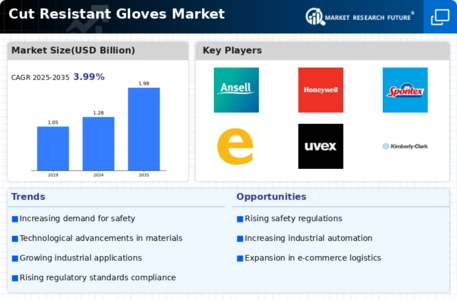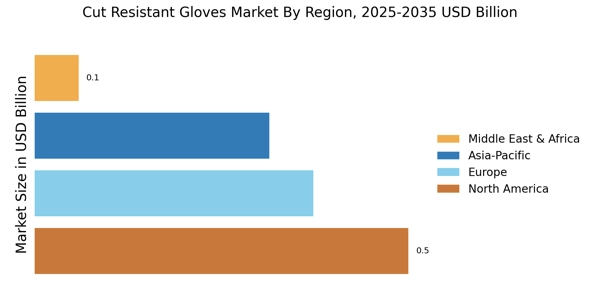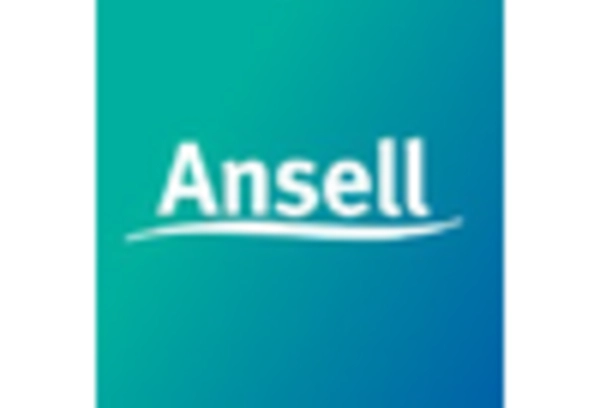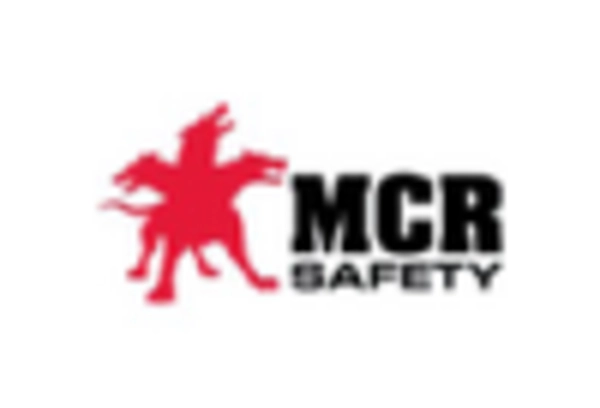Rising Industrial Safety Standards
The increasing emphasis on workplace safety regulations is a primary driver for the Cut Resistant Gloves Market. As industries such as manufacturing, construction, and automotive continue to prioritize employee safety, the demand for protective gear, including cut resistant gloves, is likely to rise. Regulatory bodies are implementing stricter guidelines, compelling companies to invest in high-quality protective equipment. This trend is reflected in the market data, which indicates a projected growth rate of approximately 7% annually in the cut resistant gloves segment. Companies that fail to comply with safety standards may face legal repercussions, further driving the adoption of cut resistant gloves in various sectors.
Growing Awareness of Workplace Hazards
The rising awareness of workplace hazards among employees and employers is propelling the Cut Resistant Gloves Market. As more individuals recognize the risks associated with manual labor, there is a growing demand for protective gear that can mitigate these dangers. Educational initiatives and training programs are increasingly highlighting the importance of using cut resistant gloves in various industries. This heightened awareness is reflected in market trends, with a notable increase in sales of cut resistant gloves reported in sectors such as food processing and metal fabrication. The market is projected to expand as more companies prioritize employee safety and invest in protective equipment.
Increased Demand from Emerging Markets
The growing industrialization in emerging markets is a significant driver for the Cut Resistant Gloves Market. As countries develop their manufacturing and construction sectors, the need for protective equipment, including cut resistant gloves, is becoming more pronounced. This trend is particularly evident in regions experiencing rapid economic growth, where safety standards are evolving. Market forecasts suggest that the demand for cut resistant gloves in these emerging markets could increase by 12% over the next few years. Companies are likely to focus on these regions to capitalize on the expanding workforce and the corresponding need for enhanced safety measures.
Technological Innovations in Materials
Advancements in material technology are significantly influencing the Cut Resistant Gloves Market. The development of high-performance fibers, such as Kevlar and Dyneema, has enhanced the protective capabilities of gloves while maintaining comfort and dexterity. These innovations allow manufacturers to produce gloves that not only meet but exceed safety standards. Market data suggests that the introduction of new materials is expected to contribute to a 10% increase in market share for cut resistant gloves over the next five years. As industries seek to improve worker safety without compromising on usability, the demand for technologically advanced cut resistant gloves is likely to surge.
Expansion of E-commerce and Retail Channels
The expansion of e-commerce and retail channels is reshaping the Cut Resistant Gloves Market. With the rise of online shopping, consumers now have greater access to a variety of protective gear, including cut resistant gloves. This shift in purchasing behavior is likely to drive market growth, as more individuals seek to buy safety equipment from the convenience of their homes. Market data indicates that online sales of cut resistant gloves have increased by approximately 15% in the past year. Retailers are also expanding their product offerings to include a wider range of cut resistant gloves, catering to diverse consumer needs and preferences.


















Leave a Comment